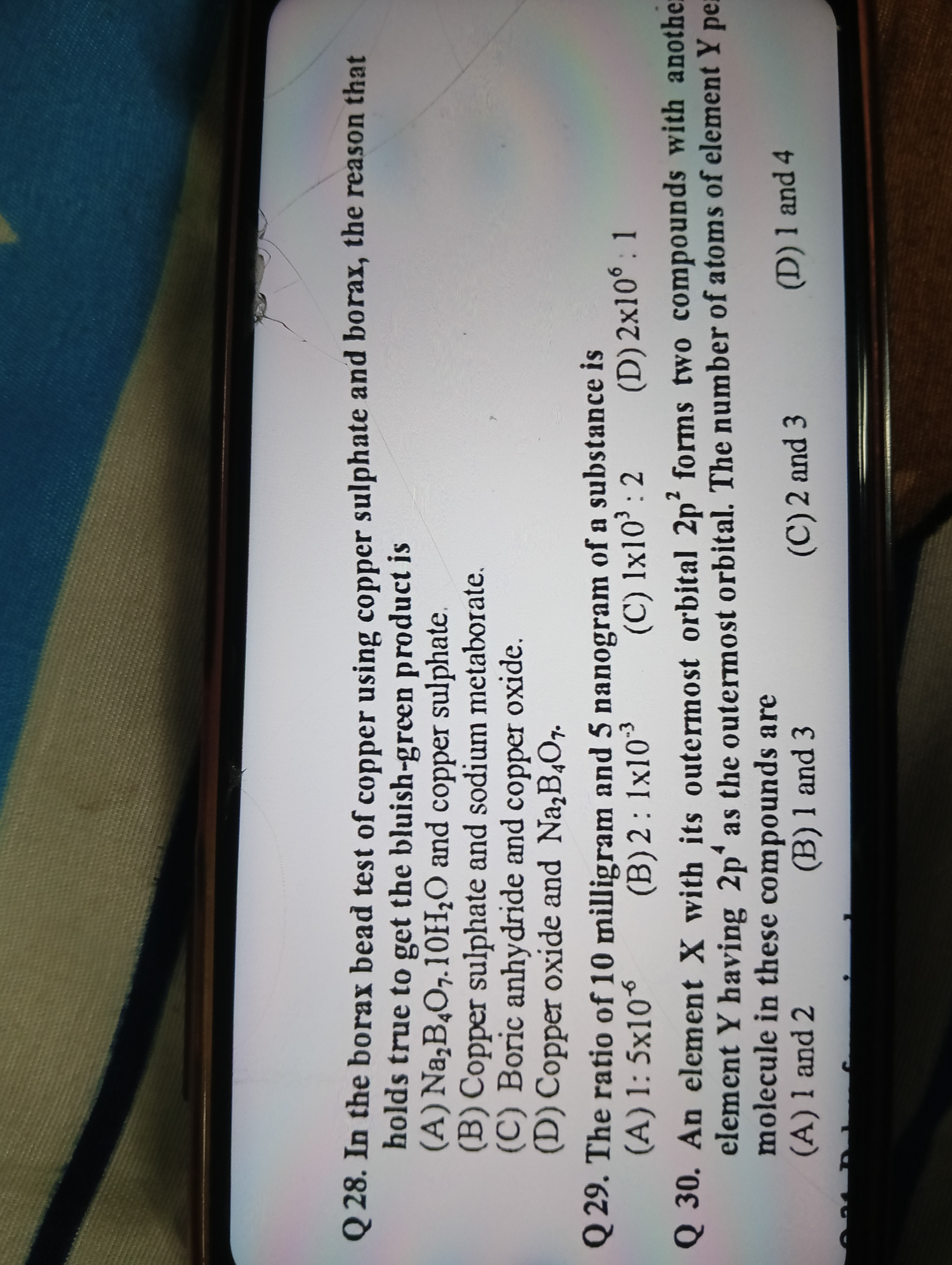In the borax bead test of copper using copper sulfate and borax, the reason that holds true to get the bluish-green product is (A) Na2B4O7·10H2O and copper sulfate, (B) Copper sulf... In the borax bead test of copper using copper sulfate and borax, the reason that holds true to get the bluish-green product is (A) Na2B4O7·10H2O and copper sulfate, (B) Copper sulfate and copper metaborate, (C) Borax anhydride and Na2B4O7, (D) Copper oxide and Na2B4O7. The ratio of 10 milligram and 5 nanogram of a substance is (A) 1:5x10^6, (B) 2:1x10^3, (C) 1:10^2, (D) 2:10^6. An element X with its outermost orbital 2p forms two compounds with anionic element Y having 2p as the outermost orbital. The number of atoms of element Y per molecule in these compounds are (A) 1 and 2, (B) 1 and 3, (C) 2 and 3, (D) 1 and 4.

Understand the Problem
The questions are related to the chemical properties and reactions involving copper compounds and atomic structures. The first question asks about the products formed in a specific test using copper sulfate and borax, while the second question deals with the characteristics of an element in relation to its outermost orbital.
Answer
28: (B), 29: (A), 30: (C)
The correct answers are: 28: (B) Copper sulfate and copper metaborate, 29: (A) 1:5x10^6, 30: (C) 2 and 3.
Answer for screen readers
The correct answers are: 28: (B) Copper sulfate and copper metaborate, 29: (A) 1:5x10^6, 30: (C) 2 and 3.
More Information
In the borax bead test, the formation of copper metaborate (Cu(BO₂)₂) is responsible for the bluish-green color. The ratio calculation involves converting units to get the scale in nanograms. For compounds, the two possibilities are related to varying oxidation states or bonding patterns.
Tips
Ensure unit conversion in ratios and check the structures of compounds to determine the number of atoms.
Sources
- During the borax bead test with CuSO4, a blue green colour is observed - infinitylearn.com
- The coloured bead produced when borax is heated with Cu - toppr.com
AI-generated content may contain errors. Please verify critical information